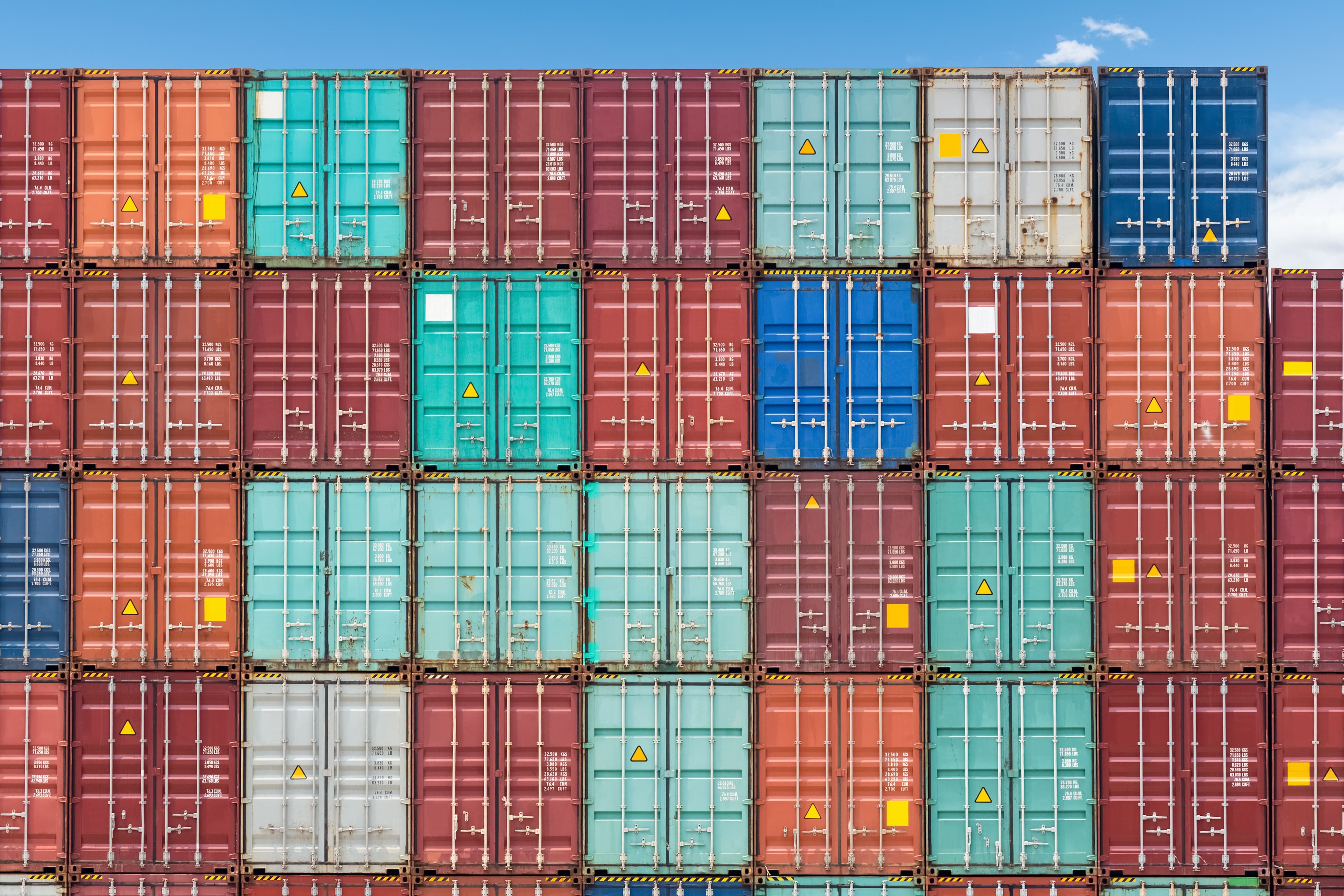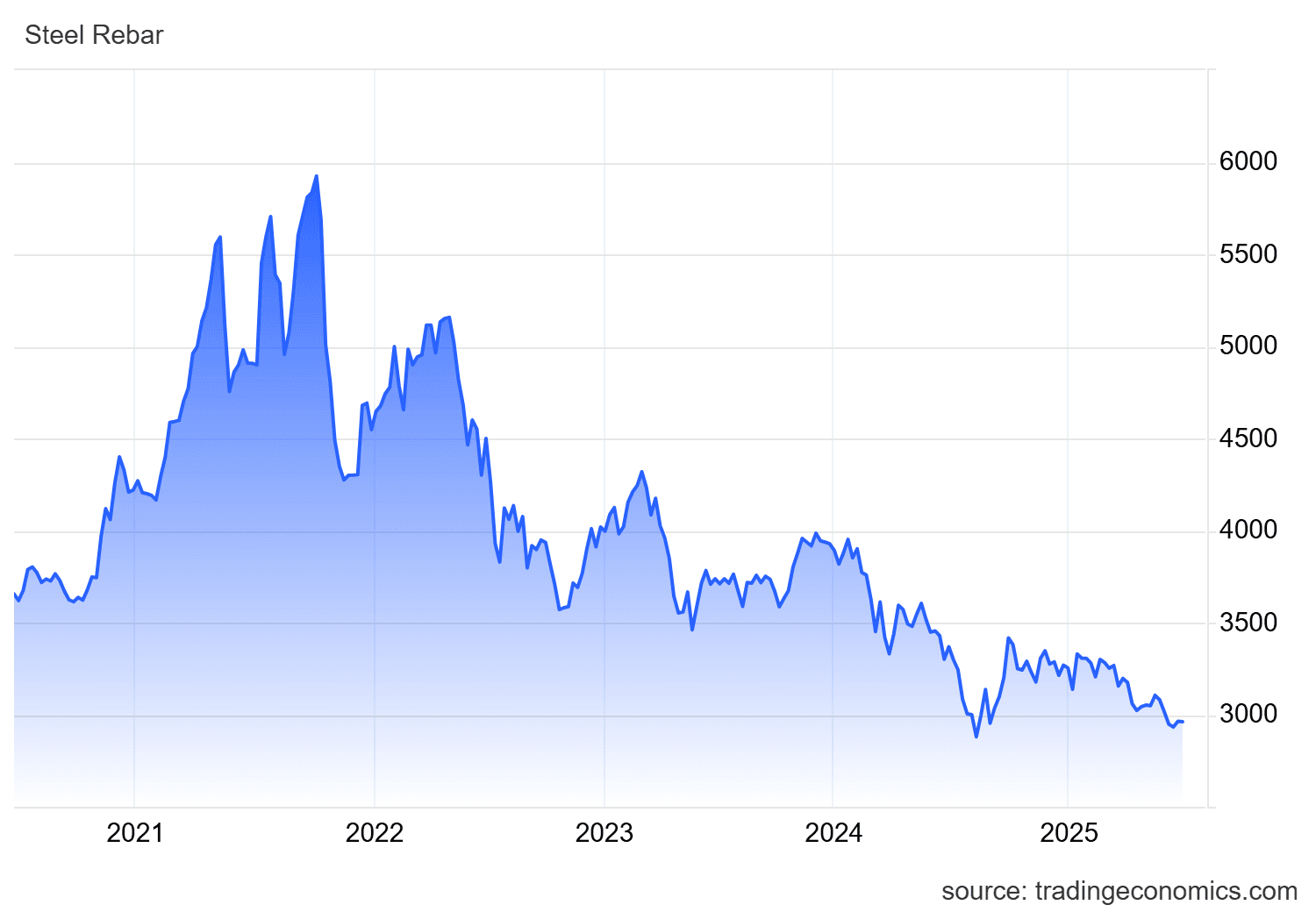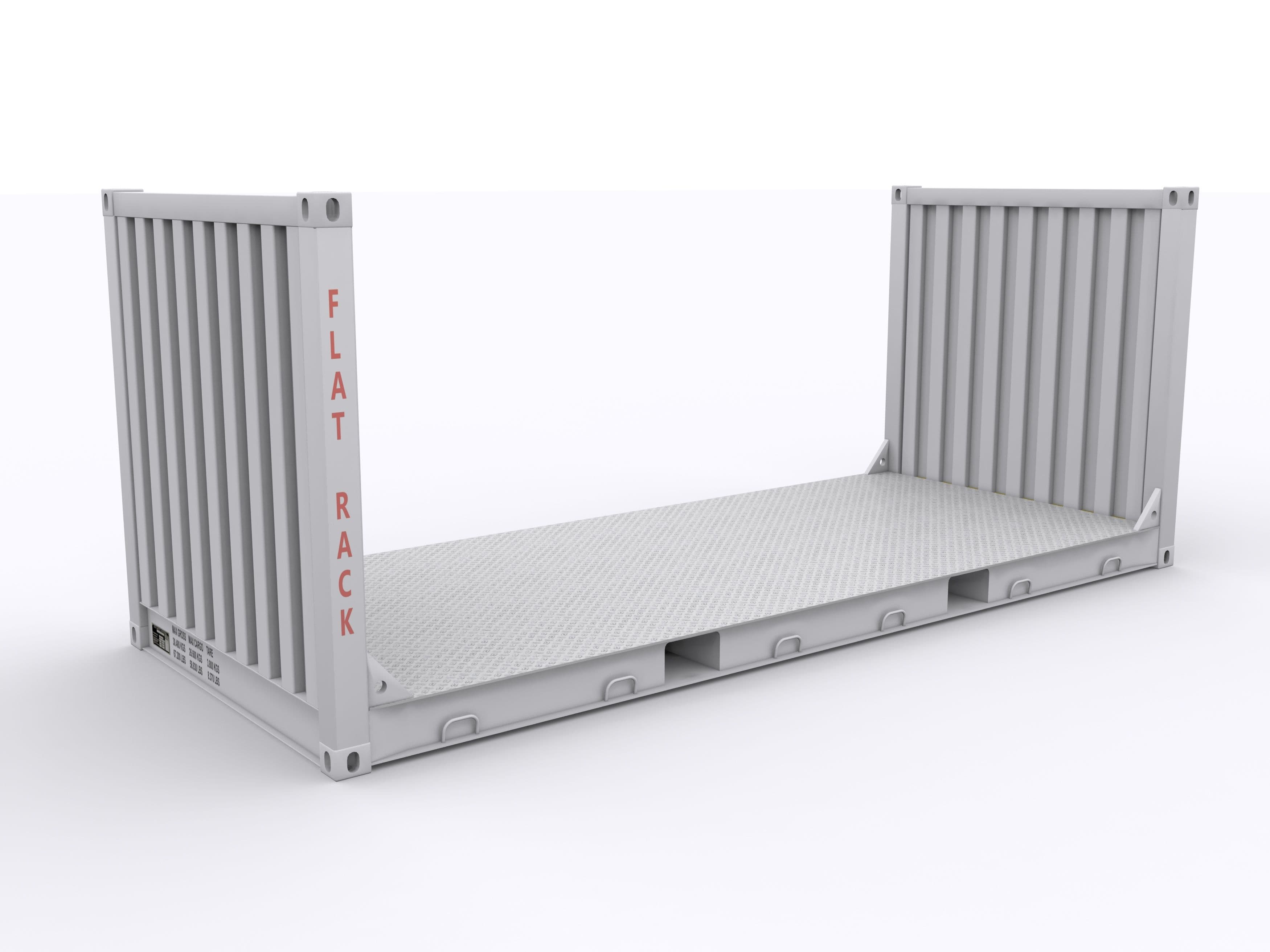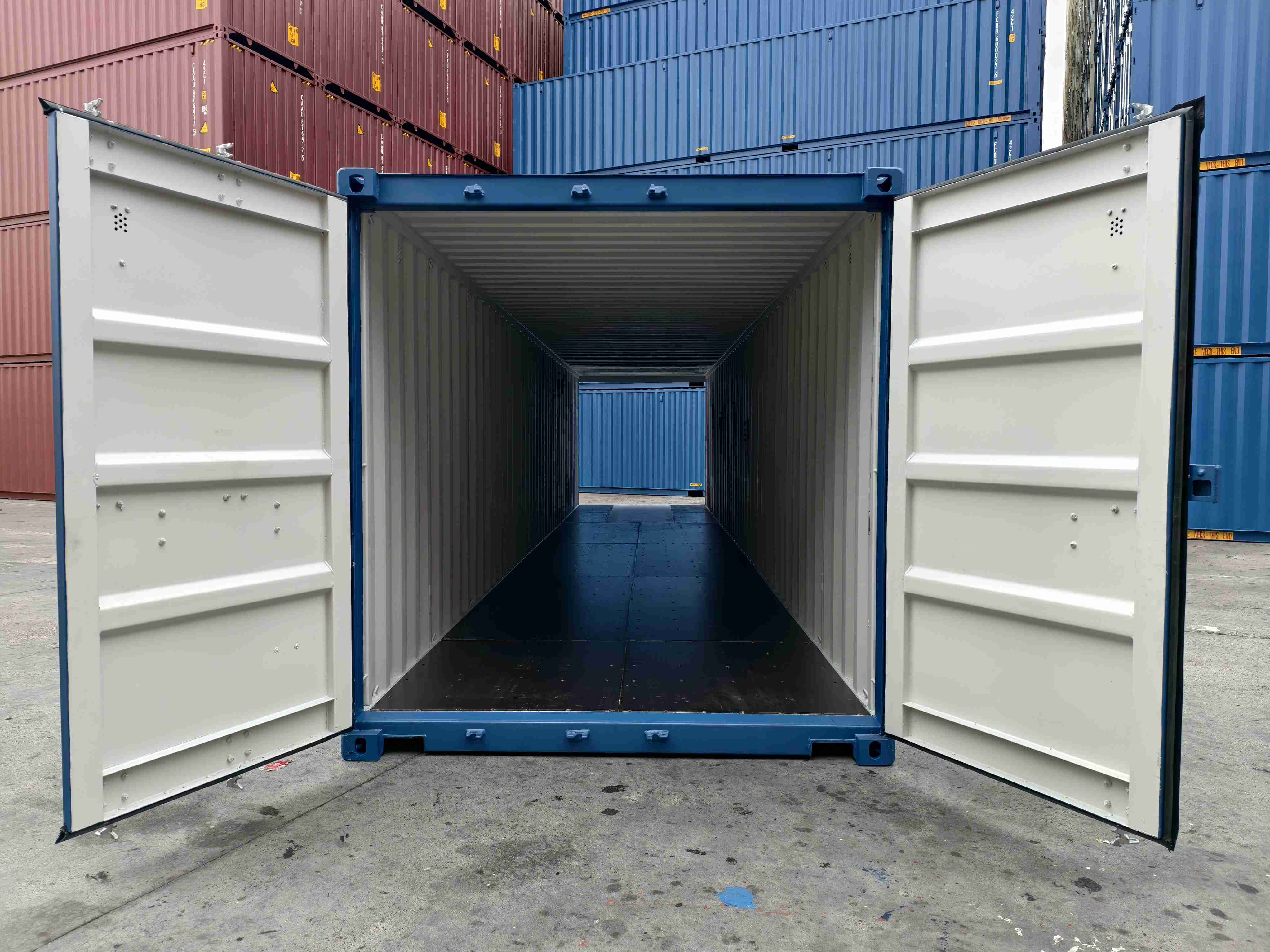What Impacts Shipping Container Prices in the UK?
Shipping container prices are partly influenced by global factors that can vary. There are also fixed costs that will always affect UK shipping container costs. We explain these varying and fixed considerations for your container purchase.
- Production Capacity
- Steel Prices
- Freight & Port Considerations
- Demand
- Sizing
- Type of Container
- Condition
- Accessories
It’s crucial to be aware that the container market can change a lot regularly, so we always recommend getting a fresh quote when you’re ready to purchase a container.

Global Factors & Container Prices
Production Capacity
Approximately 90% of the world’s containers are manufactured in China, so any disruption to production can lead to supply shortages. If the supply of new containers drops while demand remains consistent, prices will rise accordingly. Alternatively, if demand is low in China itself, there will be more containers available for export and prices can fall.
Steel Prices
Why is the price of steel so volatile?
UK shipping containers are made from steel. When the costs of raw materials like iron ore or coal change, container prices will also change.
Steel production may be reduced or increased due to government policies, or impacted by tariffs and trade agreements. For example, environmental protection policies may restrict energy-intensive industries like steel, limiting production. Because steel production requires such large amounts of energy, changes in energy prices will also affect the price.
Changes to these rules or to import and export regulations can affect how long and how much it costs to move shipping containers.
See image for steel rebar prices per tonne 2000-2025.
End of Q2 2025, 3000 CNY = 305 GBP

Vessel Availability, Port Capacity & Freight Rates
As most UK shipping containers need to be shipped from China, their costs will depend on vessel space and shipping costs. New shipping containers are usually one trip shipping containers - i.e. they have been manufactured in China and then immediately sent to the UK.
If there is limited vessel availability or port congestion is causing delays, this will impact container supply chains. The cost of shipping new and used containers can also vary due to freight rates and the price of fuel. When oil prices change, vessel fuel prices will change, so containers’ shipping costs may also go up or down.
The Dollar Rate
The global shipping industry mostly operates in US dollars, which means the dollar rate - its exchange rate with other currencies - has an impact on container costs.
The dollar rate itself can be impacted by global tensions and wars, e.g. the Ukraine-Russia conflict saw investors move funds from Europe to the ‘safer’ US currency. Inflation and the US economy can also see the dollar move up or down.
The dollar influences some of the factors already covered above, including steel prices and production costs. For instance, if the Chinese yuan is weak against a strong US dollar, manufacturing costs can rise in China, which are passed on to buyers.
The dollar rate can often impact freight rates, which can then affect container prices. Overall, if the US dollar goes up, it costs more to buy containers in other currencies. However, if the dollar is weaker against those currencies, container prices will be lower.
Tariffs, Trade Wars & Worldwide Demand
When economies are growing, demand tends to increase, leading to higher prices. However, recessions or economic slowdowns usually reduce demand, so prices can fall. Major disruptions, like the Suez Canal blockage and Covid, have a large impact on global trade, pushing up prices.
Tariffs and trading tensions can also impact worldwide demand. Tariff rumours or announcements can cause a surge in demand as businesses try to move goods before they are hit by tariffs. This leads to increased freight and container demand, pushing up prices.
These surges can be followed by significant drops in demand once tariffs are introduced and trading slows down. If freight shipping volumes fall, container prices can come down. However, reduced shipping volumes can sometimes cause other issues. There might be too many containers stuck in one part of the world. This means moving them around and higher logistical costs.
Fixed costs that influence shipping container prices in the UK
All UK shipping container prices are based on size, condition and the type of container.
Shipping Container Sizes
Standard shipping container sizes range from 4ft to 40ft long (sometimes 45ft). From 8ft long and up, they will usually have a standard width of 8ft and be 8ft 6 inches high. Simply, the bigger the container, the more the container costs.

Different Types of Containers
A standard container will be made of steel on all sides and have a single set of lockable double doors at one end. But there are a range of specialist container variations available. Depending on how you plan to use your container, these might be a better option.
The prices for specialist storage containers are usually higher than a standard container. They can vary: the extra height in a high cube container may only add a few hundred pounds, but the additional access doors for tunnel or side opening containers will add more costs to a storage container.
- High Cube: Extra foot of height compared to standard shipping containers, so perfect for larger or bulkier items.
- Tunnel: Doors at both ends, so great for regular walk-through access and more flexible access to larger items.
- Side Opening: Additional long side doors that open along the entire container’s width.
- Open Top: Easier loading and unloading for tall cargo - remove the tarpaulin cover for fast access with lifting equipment.
- Flat Rack: No roof or side walls so useful for very large equipment, creative conversions and transportation.
Shipping Container Variations

Flat Rack Container

High Cube Container

Tunnel Container
Specialist Container Pricing
Specialist shipping containers usually go from most to least expensive in the following order:
- Side Opening
- Flat Rack
- Open Top
- Tunnel (double doors)
- High Cube (extra foot)
Container Condition
New or one-trip shipping containers have been used only once - when they were shipped to the UK from China. As a result, they will be in the best possible condition and their price reflects this.
Used shipping containers have had some previous use and are a good option if you’re looking for a more affordable container for long-term secure storage. Their condition can vary, so you should check that they’re still sold as wind and watertight. They will usually have visible signs of wear, although many can look near-new with just a fresh coat of paint.
Prices can also vary based on whether a container is sold as:
- As-Is: Comes as seen. No guarantees on quality and likely not suitable for overseas shipping.
- Wind & Watertight: Guaranteed not to leak. Could have patches or repairs and may or may not be suitable for shipping.
- Cargo Worthy: Inspected by a marine surveyor and certified as safe and secure for shipping. Will be fitted with a CSC plate that allows the container to be shipped internationally for up to 5 years.
Shipping Container Accessories
Custom modifications or accessory options will add to container costs, and vary depending on the accessories. You can choose to fit these afterwards, but having them fitted by your container company ensures they are installed safely.
A container company should have the expertise to install them properly, while ensuring the container’s structural integrity. This is also often far more convenient as it means your shipping container is ready to use immediately upon delivery.
Shipping container accessories and add-on options include:
- Lighting
- Electrical outlets
- Racking and shelving
- Windows and doors
- Stairs
- Padlocks and twistlocks
- Moisture traps
- Insulation
Container prices can rise and fall because of worldwide demand, supply shortages and global steel prices. When choosing a shipping container, you should carefully consider how you plan to use it - now and in the future. By selecting the right size and type of container, you can make sure you’re getting the best value for your needs.